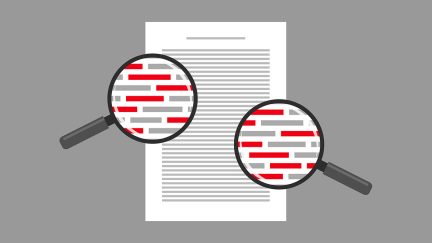Never miss a story — sign up for PLANSPONSOR newsletters to keep up on the latest retirement plan benefits news.
PSNC 2020: Legislative and Regulatory Update Part II
Experts explained regulations and legislation from Washington, D.C., as well as what employers can do if they ever face ERISA litigation.
Leading attorneys discussed recent Department of Labor (DOL) proposals, litigation and the Setting Every Community Up for Retirement Enhancement (SECURE) Act during the second day of the 2020 PLANSPONSOR National Conference.
David N. Levine, principal at Groom Law Group, Chartered, warned retirement plan sponsors to tread lightly before making changes to their plans. While the DOL has issued a number of pieces of guidance in the past several months, including its proposal on environmental, social and governance (ESG) investing and a final rule on electronic communications delivery, the upcoming presidential election will have a great influence on final rulings. Plan sponsors that go ahead and make changes could wind up spending more money than they would have if they waited, Levine said in the virtual panel.
He also explained areas of concern for plan sponsors to consider ahead of November’s election. He said sponsors should familiarize themselves with each candidate’s platform on retirement security, tax benefits, etc. For example, Joe Biden has centered his platform on equalizing tax benefits.
Levine noted that Richard Neal, D-Massachusetts, head of the House and Ways Committee, has been increasingly active in trying to expand retirement coverage and access, and, more specifically, pushing for an automated 401(k) or required 401(k). “Many plan sponsors may have a plan that covers everyone; however, many may have some employees who are not covered at all. If this is enacted, there is going to be this discussion where you ask yourselves if everyone is covered,” Levine said. Additionally, a required 401(k) would expand rollovers and allow 403(b) plans to explore other retirement avenues, he said.
While President Donald Trump has not issued a clear road map on retirement plans, Republicans are likely to increase the “Rothification” of 401(k)s, Levine continued. Additionally, the Trump administration is in favor of expanding employee-stock ownership plans (ESOPs).
Employers also will need to check in with their retirement plan recordkeepers on issues highlighted in the SECURE Act, including part-time eligibility rules. Under the mandatory requirement, long-term, part-time employees who work at least 500 hours in three consecutive years and meet the minimum age requirement are allowed to participate in the company’s retirement plan. Plan sponsors will need to count hours starting next year to determine eligibility, he reminded conference attendees.
Additionally, under the new SECURE Act rules, participants are allowed to take up to $5,000 from their retirement accounts for the birth or adoption of a child, also known as a qualified birth or adoption distribution (QBOAD). The IRS has issued clarifications on the timeliness of plan re-contributions. “If you allow this, you have to allow re-contribution to the plan at any point in the future,” Levine said. “We’re waiting to see what recordkeepers say.”
Emily Costin, partner at Alston & Bird LLP, discussed litigation against retirement plans during the panel. In recent months, most Employee Retirement Income Security Act (ERISA) cases have resulted in settlements, she said. Jamie Fleckner, partner at Goodwin Procter LLP, noted a similar trend among 403(b) cases, most of which have involved universities. Many of the suits, including those involving John Hopkins and Emory University, have since settled, while some are currently on appeal, such as the ERISA suit against Washington University.
Costin added that, oftentimes, 403(b) plans have a unique participant base with distinctive needs that results in higher recordkeeping fees. “They often have different things that they’re looking for in terms of their recordkeeper—better participant communication and more on-site visitations,” she said. Costin advised 403(b) plan sponsors to conduct a request for proposals (RFP) to understand what services they are receiving and at what cost.
While there are no precise paths to avoid ERISA litigation, plan sponsors can prepare themselves and their plan committees should they ever be brought to court, Costin said. Benchmarking investments and soliciting RFPs are standard best practices to follow. For example, if a plan sponsor offers custom target-date funds (TDFs), it should understand the basics of how these funds work, what the fees are, what the underlying investments are and how much risk is in the plan, she said.
Plan sponsors who show thoughtfulness and have reasoning behind specific investments will have less to worry about, Fleckner said. “You don’t have to abandon active management for index funds if you have a reason to have active management. You don’t have to have stable value or a money market fund,” he continued.
“Who are the people on your committee that are educating themselves so that they can stand up in court and say that they were trained?” Costin urged plan sponsors to ask themselves. “The endgame is people being able to say they knew what was going on, that they researched [it] and then asking themselves what they can do now to prepare themselves in case someday they need it.”

